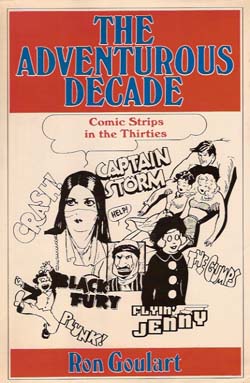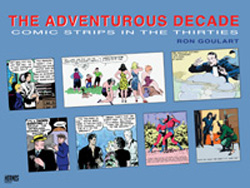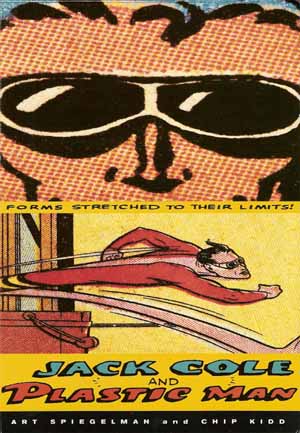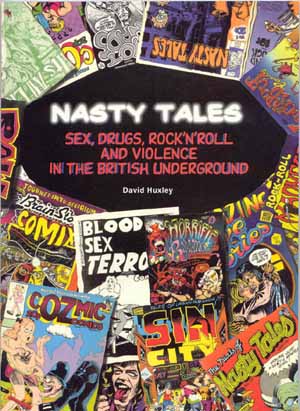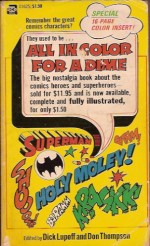
Edited by Dick Lupoff and Don Thompson (Ace Books)
ISBN: 01625
(Krause Edition 1997 ISBN-13: 978-0873414982)
I tend to concentrate on the worth and validity of sequential graphic narrative, both as art-form and commercial medium, and only peripherally discuss its value as a tool of nostalgia. That’s not because it is of any lesser value, but simply a facet of the fact that nostalgia is an intensely personal and mostly subjective experience. Tintin may be a world classic but the size and feel of the oversized hardback album that instantly rockets me back to 1963 and swamps me in a sea of joyous re-sensations is something I can barely describe, let alone communicate.
But comic-books do have a shared culture: a communal history and geography, part internal landscape and continuity and part acquisition memory as thousands of dedicated fans simultaneously recall how they first joined our particular cult and culture.
This is the book that really kicked it all off for comics fandom and brought criticism of the art-form into a more professional arena. Professionally produced by fans for fans it dangled the dazzling prospect of getting involved and getting paid for it: of joining those people that made the comics. It said “It’s okay to love comics, and by the way have you seen these?â€
It really began in 1965 with an industry insider: Jules Feiffer had published The Great Comicbook Heroes, a compendium and essay on historic characters of the early days of the industry, but this collection of recollections and reflections by a serious assemblage of fun-seeking writers spoke less to popular culture and more to the joy and wonder their vanished subjects had caused, and openly wished for their revival and return: these guys wanted to share the fun….
Complete with 16 pages of enticing full-colour cover reproductions and dotted with dozens of monochrome illustrations, it all starts with ‘The Spawn of M.C. Gaines’ an examination of the comic-book industry’s creation and its biggest stars Superman and Batman, from music critic, author and SF editor Ted White, whilst labour-leader, political activist and retired Military Intelligence officer Dick Ellington wrote compellingly of the innocent wonders to be found in Fiction House’s more adult oriented fare in ‘Take Me to Your Leader’, paying particular attention to the iconic Planet Comics.
Editor and author Dick Lupoff remembered the original Captain Marvel in ‘The Big Red Cheese’, Comics historian Bill Blackbeard described the glory days of Popeye in ‘The First (Arf Arf) Superhero of them All’ and journalist Don Thompson (who would dedicate decades of his life to the cause as editor of the industry’s greatest periodical The Comic Buyers Guide) conjured up magical moments with his recollections of Timely heroes evolution into Marvels in ‘OK Axis, Here We Come!’
Tom Fagan organised such successful comics-related Halloween pageants that he and his town of Rutland, Vermont became a part of four-color folklore themselves. In ‘One on All and All on One’ he outlines the history of the kids and kids gangs, writer editor Jim Harmon relates the history of the Justice Society of America in ‘A Swell Bunch of Guys’ and TV producer Chris Steinbrunner described the celluloid crossovers of comics characters in ‘The Four Panelled, Sock-Bang-Powie Saturday Afternoon Screen.’
Roy Thomas investigated the influence of Fawcett Comics legendary second stringers in ‘Captain Billy’s Whiz Gang’, writer and historian Ron Goulart explored the inexplicable appeal of ‘The Second Banana Superheroes’ and Harlan Ellison concluded the affair with paeans to surreal whimsy for the very young with an discussion of the incredible George Carlson and Jingle-Jangle Comics in ‘Comics of the Absurd’
This book opened the door for serious comics fandom, and possibly preserved what credibility the medium might have left after the painful over-exposure that came with the Camp Superheroes craze and Batmania. But it’s also a heartfelt and incisive examination of what we all love about comics and a book every fan and collector should read.
© 1970 Richard A. Lupoff and Don Thompson. All rights reserved.

